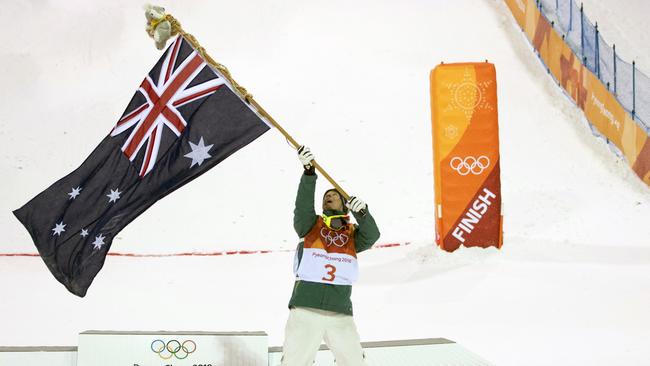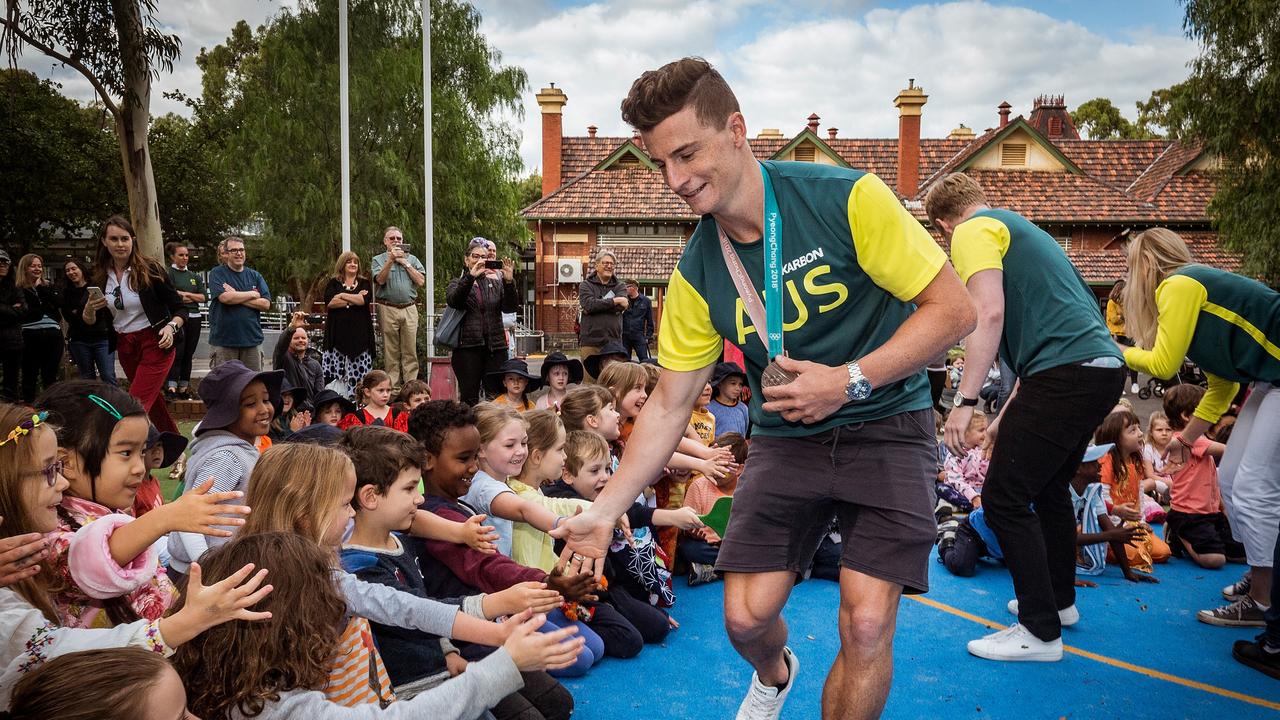Winter Olympics 2018: Matt Graham’s dad locked in bumpy ride to silver
When Matt Graham clicked on his skis at the top of the moguls runs before winning Olympic silver there was no fear his gear would fail him.

When bow-legged Matt Graham clicked into his skis at the top of the Phoenix Snowpark Olympic Course before winning the Olympic silver medal there was no fear his gear would fail him.
His father, Steve, whom Matt says is responsible for his aggressive quest for perfection, had already spent 2½ hours precisely fixing his bindings to the ski.
That attention to detail, and the family connection, meant repeating the gruelling moguls run — which included two huge jumps — wasn’t going to cause Matt any grief.
“Being the Olympics, I cleaned my reading glasses first and instead of the old adage of measure twice cut once, I probably measured four times before I started drilling holes in the skis,’’ said Steve, who is in PyeongChang with extended family and some of Matt’s school friends.
“The bindings are carrying massive pressure when the skiers are coming down from a massive height in the jumps and there is no second chance. If anything lets go that’s 12 months (rehabilitation) as a knee will pop.”
Not many know that Matt is bow-legged and requires special adjustments to his bindings to ensure the skis stay absolutely flat on the snow. That is an essential part of a sport in which 60 per cent of points are judged by the precision of a skier’s turns.
The 23-year-old had his bindings specially designed and engineered, after much experimentation as a youngster competing with the Perisher Winter Sports Club to ensure his optimal skiing position.
Steve established a strong relationship with Japanese mogul ski manufacturer ID One, to the point where the company made special short skis for Matt and his brother Dave when they were younger.
The moguls skis are made of wood, and given the extreme pressure they are put under through the 250m course, Matt goes through four or five pairs a year.
“Matt is a ski technician himself as he has followed my lead and picked up the tools,” said Steve. “On the world cup circuit, the inside edges of the skis wear out and need some work, and Matt attends to that.
“If you can rule out equipment failure then Matt can focus on himself and there are no chances of wondering, ‘if only?’ ”
Matt pulled off his best run when it counted, in the super final which was down to the best six skiers. He kept his skis together and nailed the jumps, critically the bottom air which he had been concerned about because of some fresh snow on the takeoff ramp.
“Pretty punchy” was how he described it, but upon landing Matt knew he had won a medal. The question was which colour. “I was just focused on the first few turns to get a good start and a good rhythm and hang loose,” he said.
His good friend 25-year-old Canadian Mikael Kingsbury then executed a superb run to take the gold. For Kingsbury, who had taped a hand-drawn Olympic rings and a motto “I will win” above his bed at age nine, it was the accomplishment of a lifelong dream. Japan’s Daichi Hara finished third.
Matt had moved from qualifying in ninth position to laying down a strong first run in the finals, moving to second. But it enabled him to see his opponents struggling on the technical course, particularly after they had chosen the chopped up middle run for their line.
“Conditions were pretty heavy, and a lot of heavy hitters were going down,” he said. “I put myself in a position, second-last guy to come down and see what was unfolding, I was watching it on a TV monitor. I like to get involved in the event and know what I have to beat.”
Matt credits much of his skiing ability to chasing his brother Dave around the mountains. As the youngest of four, Matt was constantly trying to keep up with his siblings whether it was bypassing the crawling stage and running at nine months, or his sisters Eliza and Heidi putting him on a bike aged two without training wheels.
“He (Dave) was a big influence, he chose skiing and, as the younger brother, I wanted to be like my older brother: he pushed me at an early age,” Matt said. “I chased him around the mountain, I wanted to do the tricks he did and be as fast as him. His influence has given me a chance to be a contender on the world stage.”
The Snowy Mountains — a seven-hour drive from his home on the NSW central coast — became Matt’s backyard on weekends and by the time he decided he wanted to represent Australia, Jindabyne-based moguls coach Peter Topalovic encouraged him to do the moguls. Dale Begg-Smith was also staying in Jindabyne and would pass on hints to a young Matt — something that has continued to this day.
Begg-Smith, who won two Olympic moguls medals, scrutinises video footage of Matt and was one of the first people to have recognised his raw talent. Back in those days he was known as “Mogul Matt”.
“I’m sure Dale is somewhere in the world watching and is pretty chuffed,” Matt said. “He’s definitely been a big influence on me and it was only just before he came here and we were in touch at Steamboat (in Colorado), showing him footage and he was giving me pointers. He just has a crazy eye for the sport and can see it the way no one else can.”
Matt received his Olympic silver medal at the presentation ceremony last night and reflected how he had first seen one at an awards night in 2010. Lydia Lassila had brought along her Vancouver Olympic gold along.
“I was holding it, it was so much weight and so big, and I decided, I really want one of these.”



